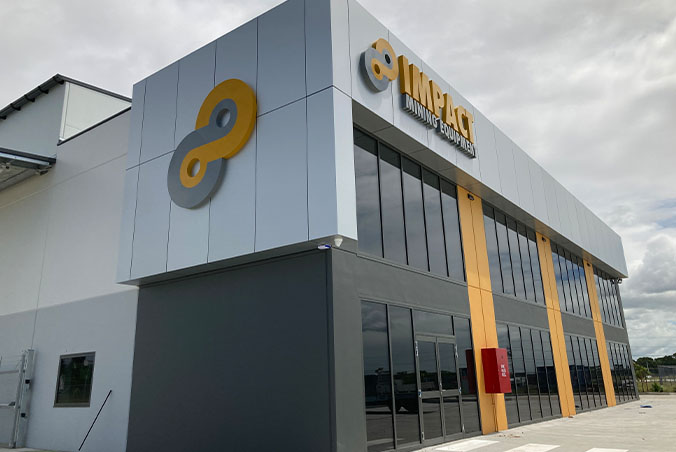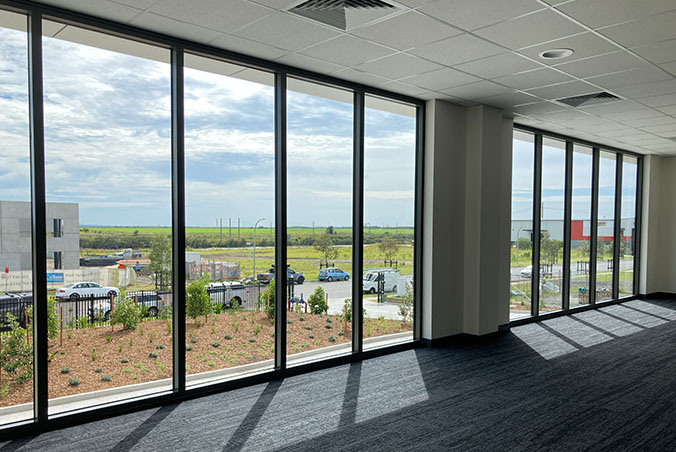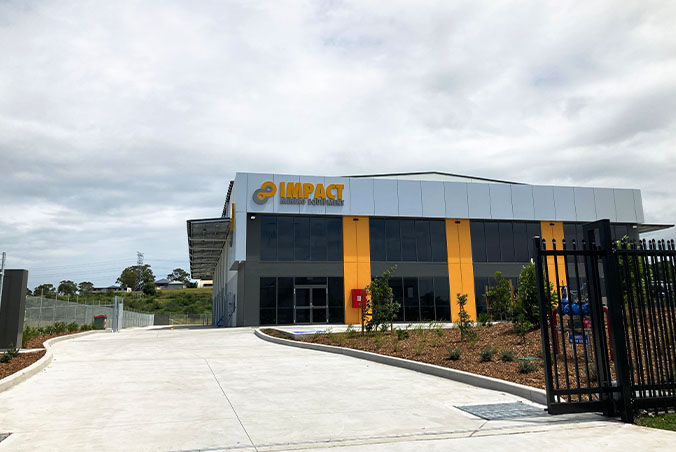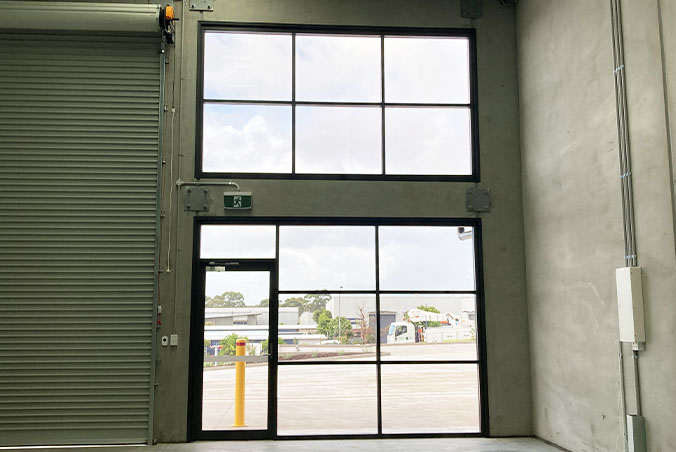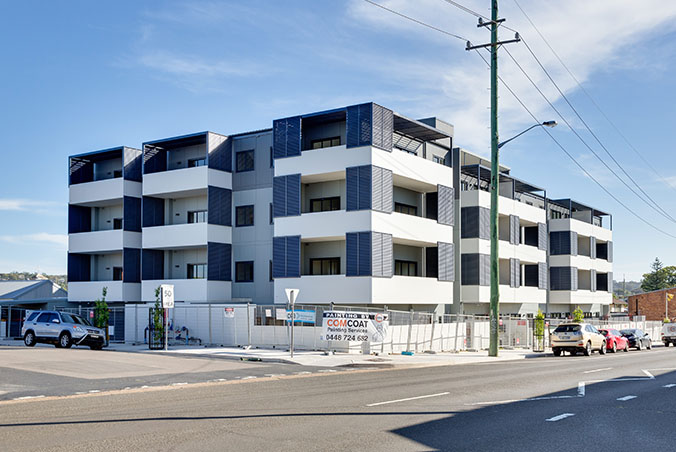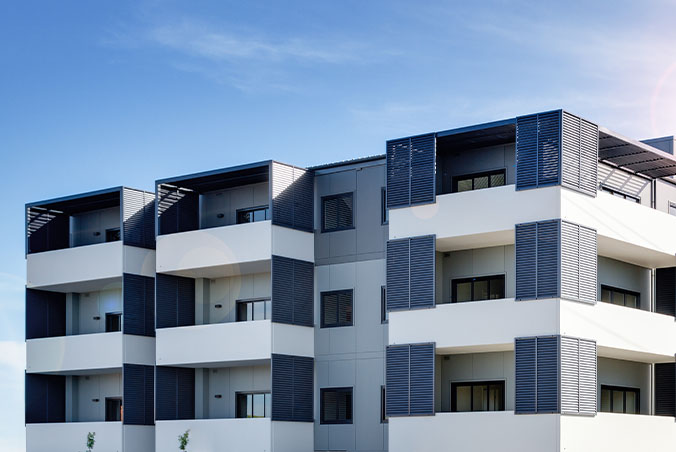Impact Mining Equipment’s new warehouse and office facility, incorporating a 1600m² warehouse and two storey office facility.
Thermal Breaks: The Gap That Changes Everything
Aluminium is great. It’s strong, sleek, recyclable, and doesn’t warp in the sun. But left to its own devices? It’s also a highly efficient thermal conductor. Which, in an office building, can mean unwanted heat streaming in through your perfectly framed windows.
Enter: thermally broken frames — a small change with serious upside.
How It Works
A thermal break is just what it sounds like: a non-conductive material inserted between the inner and outer aluminium sections of a window frame. This stops heat (or cold) from moving through the metal — creating a barrier that keeps your interior climate steady.
No more metal frames radiating heat like a barbecue plate on a summer afternoon.
Why It Matters in Offices
Office buildings live and die by thermal comfort. Whether it’s a CBD tower or a business park in the burbs, these projects need to:
-
Meet energy efficiency targets
-
Control internal temperatures without overloading HVAC
-
Provide comfort for workers without complaints about hot desks by the window
Thermally broken aluminium frames make it easier to:
-
Hit U-value targets under NCC
-
Reduce energy bills
-
Support Green Star or NABERS ambitions
-
Create façade systems that perform year-round
Hunter Windows Has You Covered
We manufacture and supply a full suite of commercial-grade thermally broken systems, engineered to:
-
Work with double or triple glazing
-
Meet compliance specs for commercial and high-rise projects
-
Support WERS and energy modelling with accurate data
Need to meet a tight Section J report? Designing a facade that balances glass area with insulation? Or just want consistent comfort across every floor, all year round?
Thermal breaks may be invisible. But you’ll feel the difference — and so will your client’s energy assessor.
